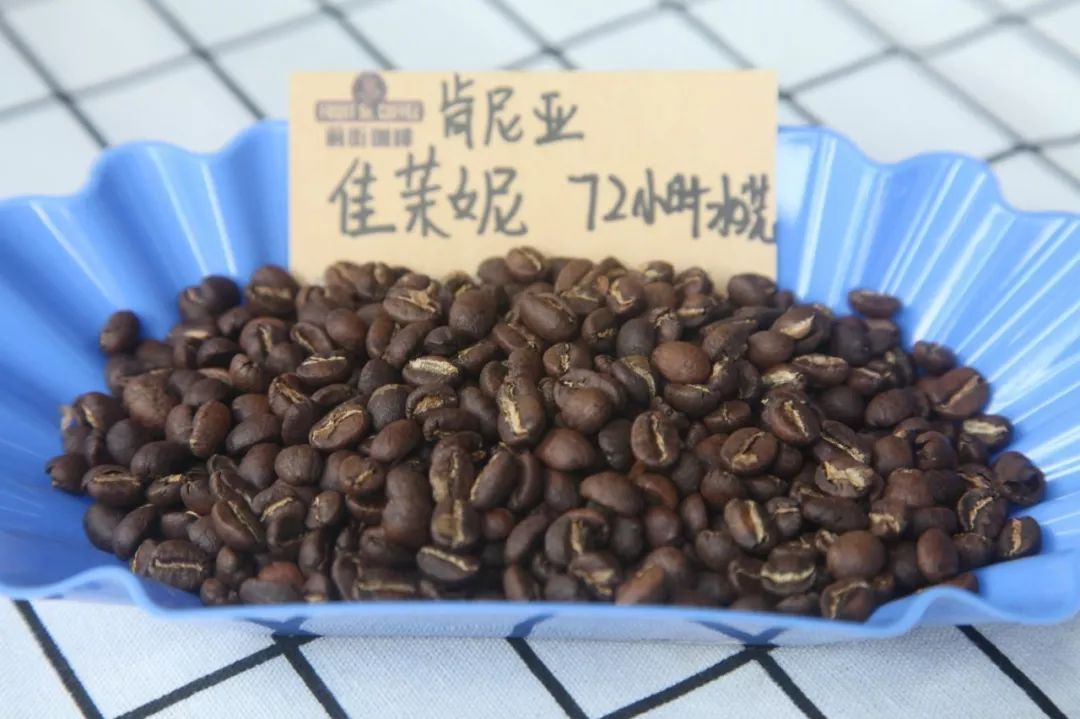What is the chemical reaction in the roasting process of coffee beans? What is the thermal decomposition reaction of coffee beans during roasting

Professional coffee knowledge exchange More coffee bean information Please pay attention to coffee workshop (Weixin Official Accounts cafe_style)
What are the chemical reactions involved in roasting coffee beans? What is the thermal decomposition reaction in roasting coffee beans?
Coffee beans after high temperature roasting, will produce a variety of attractive aroma and taste, mainly because of the roasting process, the chemical reactions that take place inside the beans, and the factors that contribute to these chemical reactions are raw materials (organic matter in the beans), temperature (roasting heat), pressure (after the beans are heated, water vapor and other gases form high pressure in the beans), water activity, etc., and of course oxygen in the air. The most important chemical reactions in the baking process are
Menard reaction (including Stryker degradation)
caramelization reaction
pyrolytic reaction
Among them, the duration of Mena reaction spans three stages of roasting, such as dehydration, Mena and development. It can be said to be the most important chemical reaction, but even if Mena reaction is fully done, the final coffee flavor cup may not be the best, because it must be matched with caramelization reaction and high temperature pyrolysis reaction in the development period.
I really want to explain the above picture in detail, but it is not clear in a few words. It is very important to remind that the process of baking beans is not a military parade. Everything is uniform. For example, after dehydration, all beans or beans will turn white and yellow inside and outside. This is unlikely. It is a bit like a tourist lazy crazy street. Some people hang around and wait for a tour bus. Some people are still reluctant to come out in some shops. Others walk slowly with a certain pace to enjoy the feeling of emptying. Even if it is the same bean, part of it may be caramelized, and part of it is still undergoing Mena hydrolysis reaction. How to make a single bean enter the same chemical reaction simultaneously, and then make the whole pot of beans as consistent as possible, is the basic skill pursued by the equipment and method of baking beans.
The temperature marked above is the number of bean temperature bars in my imagination, and the error must be not small, but the order of reaction or overlapping phenomenon should be correct.
In particular, I would like to mention the pyrolysis reaction, which is a high temperature cracking reaction of organic substances in the absence of oxygen (low oxygen). The reaction temperature is 200-300 degrees, and the final form is coke, similar to the reaction of burning charcoal in a charcoal kiln. In the process of baking beans, on the one hand, it will produce highly volatile small molecular aromatic substances (refer to Shao teacher, very fragrant but also quickly fade), on the other hand, it will transform the raw taste of Mena reaction intermediate products (refer to Rob Hoos), good use of it, will help coffee add fragrance to bitter, but not well mastered, it will become carbon burning flavor coffee.
The important aroma of coffee comes from oxygen-containing heterocyclic ring of Mena reaction and aromatic compounds produced by Stryker degradation. However, coffee from different origins has different organic matter composition and physical structure such as green bean density. What aroma is produced at what stage? The farther the origin is, the greater the difference. For example, Guatemala and Ethiopia have great differences.(See the excerpts from the previously cited literature). The previous literature studies have proved that the volatile intensity of the most important volatile substances in the coffee roasting process will reach its peak after the first explosion. It can be seen that after the first explosion and pressure relief, the Mena reaction, partial caramelization reaction and high temperature pyrolysis reaction continue in the beans, showing a phenomenon of polygonal peaks. At this time, it is close to the end of the roasting of the next beans, especially for shallow roasting. It is indeed difficult to find the best place to put beans in such a violent situation. If the requirement is to be consistent in every pot, it is even more difficult.
Acetic acid, a by-product of the caramelization reaction, is not a very comfortable acid. It is highly volatile. The sour smell of light baked beans after baking is mainly acetic acid volatilized. The relatively light roast is very light because the caramelization reaction has not even started yet. The acidity is lower than that of light roast, with only malic acid and citric acid or astringent caffeic acid.
The non-enzymatic browning reaction (also known as the Maillard reaction) was first proposed by the Frenchman Menard in 1912, although it has been a long time since, but to this day, Menard reaction is still the food processing industry and food scientists attention, and greatly affect the manufacture and storage of many foods. Nonenzymatic browning can occur in almost all foods, including the coking of sugars and other carbohydrates, and the Menard reaction of carbohydrates and proteins, amino acids, etc. after heat treatment or storage. Both of these chemical reactions produce a brown substance, commonly known as melanin. The effects of nonenzymatic browning on food manufacturing can be described as mixed.
Many baked and heated foods, such as tea, bread, coffee and chocolate, produce brown substances during heating, giving the food a special appearance and flavor. For example, glucose alone heated at 180 degrees Celsius, can produce caramel aroma, if heated with lysine, it will emit a bread-like aroma, and heated with valine, it will also form a chocolate-like aroma. The lack of nonenzymatic browning also affects the attractiveness of baked goods.
On the other hand, non-enzymatic browning reactions have a negative effect on the nutritional composition of protein foods. For example, non-enzymatic browning reactions in meat products during heating will destroy their amino acid composition and significantly reduce their nutritional value. In addition, foods that have undergone non-enzymatic browning reactions often detect many carcinogenic ingredients, which is also something we must pay attention to.
Bake to create a rich, attractive aroma--
The seven or eight hundred aromatic components of green coffee beans must be awakened by professional roasting. Without this roasting process, coffee is just some uncomfortable sun or washing flavor, let alone drinking it. After five to seven minutes of intense heating, raw beans will cause violent chemical changes, which will emit a special fragrance. This complex chemical reaction cannot be simulated even by the most sophisticated laboratory. However, it can be summarized into several important items.
First of all, raw beans are baked at more than 200 degrees Celsius. Water begins to evaporate. The volume expands by 60%, and the weight decreases by about 20%. Depending on the degree of baking, the deeper the baking, the more weight loss. Another important phenomenon is outgassing. Green beans release carbon dioxide during roasting, and coffee beans continue to outgass after roasting. Emissions of carbon dioxide contribute to the preservation of coffee beans, because in the process of exhaust, oxygen molecules are not easy to invade, that is, the oxidation of coffee freshness can not be carried out, but after roasting, the exhaust phenomenon will gradually slow down, oxygen molecules are easy to adhere to the surface of coffee beans, coffee will soon taste, this is why coffee beans after opening is best to drink as much as possible important reasons.
Bean6 Coffee Roasting Tips
The chemical reactions of coffee beans during roasting can be judged by sound, color and taste. The color of coffee beans will continue to heat, from greyish green to golden brown and then light brown, a small amount of oil auburn, followed by a large amount of oil showing oily black brown, if you continue to bake, the oil on the surface of coffee beans will dry, showing black, and emit a lot of smoke, mixed with a scorched smell, this is close to the ignition point warning, coffee beans from light to dark, because caramelization and acid substances from the change caused.
Listening to the sound is also the basis for judging the baking degree. If the temperature of the roaster is hot enough, the coffee beans will emit two popping sounds during the roasting process. Take the high temperature resistant raw beans such as mantinin and antigua as an example. The first explosion will be emitted in about seven minutes, and the sound will be low and thin. This indicates that the pyrolysis has started, that is, the starch begins to be converted into caramel. The moisture will also be sprayed out of the bean surface with carbon dioxide, and the low popping sound will be emitted. After two minutes, it will return to calm. After about twelve minutes, it will emit the second explosion. This second explosion indicates that the coffee beans are almost ready, and then the coffee beans are removed from the roaster to the cooling tray, and the aroma is immediately diffused!
In addition, Brazil and Java and other beans less resistant to high temperature, the first explosion and the second explosion came earlier, the control of the heat should pay special attention.
bean6 data
After understanding the characteristics that appear when coffee beans are roasted, we will talk about the definition and taste of various roasting degrees. Roast has long been defined by Cinnamon, City, Fully City, and Dark roast, but in recent years, the American Fine Coffee Association has advocated the use of an Agtron number to determine roast, which is a red line to determine the degree of caramelization of coffee beans. The higher the value, the lower the caramelization, that is, the lighter the roasting degree, and the lower the value, the deeper the caramelization, that is, the deeper the roasting degree. With the data, we can understand the roasting degree of coffee beans more accurately, and there will not be different roasting standards in different regions.
Coffee flavor will also change with the roast degree, generally sour and roast degree is inversely proportional, if you prefer fruit acid flavor friends, may wish to buy lighter roast coffee, if you like a strong taste with a little sweet, you can choose heavy roast beans, in addition, caffeine content and roast degree is inversely proportional, that is, light roast coffee contains caffeine content will be higher, because caffeine will be destroyed in the roasting process. Fruity aromas decrease with roasting, but light roasts are less likely to exhibit the fermented aromas, pungency and sweetness of mellow wines. However, if the heavy roasting technique is not good, it is likely to make a burnt and bitter coffee.
Bean6 Other Factors Affecting Coffee Roasting
The hardness, moisture content and age of green coffee beans will affect roasting, so roasters will adjust the roasting process according to these factors. In general, the newer the beans, the higher the moisture content. The longer the baking time, the longer the dehydration time. The older green beans have lower moisture content and acidity, the dehydration time should be shorter, and under the same baking conditions, the acidity will be weaker and softer than the new beans.
Important Notice :
前街咖啡 FrontStreet Coffee has moved to new addredd:
FrontStreet Coffee Address: 315,Donghua East Road,GuangZhou
Tel:020 38364473
- Prev

Jiamoni, Kenya-the story of a 72-hour coffee bean wash
Professional coffee knowledge exchange more coffee bean information please follow the coffee workshop (Wechat official account cafe_style) [Kenya Jiamoni exquisite 72-hour washing] country: Kenya region: Kilinaga Kirinyaga altitude: 1700-1800m soil: volcanic soil species: sl-28,sl-34 treatment: 72 hours washing 01 | the processing plant introduces Kiangombe workers.
- Next

What chemical reaction does the aroma of coffee beans come from during roasting? Coffee beans at different roasting stages
Professional coffee knowledge exchange more coffee bean information Please follow the coffee workshop (Wechat official account cafe_style) what chemical reaction does the aroma of coffee beans come from during roasting? What is the taste of coffee beans at different roasting stages? The charming aroma of coffee is also the main reason why Napoleon, me and many coffee fans miss coffee all the time. But why on earth is coffee so bad?
Related
- Detailed explanation of Jadeite planting Land in Panamanian Jadeite Manor introduction to the grading system of Jadeite competitive bidding, Red bid, Green bid and Rose Summer
- Story of Coffee planting in Brenka region of Costa Rica Stonehenge Manor anaerobic heavy honey treatment of flavor mouth
- What's on the barrel of Blue Mountain Coffee beans?
- Can American coffee also pull flowers? How to use hot American style to pull out a good-looking pattern?
- Can you make a cold extract with coffee beans? What is the right proportion for cold-extracted coffee formula?
- Indonesian PWN Gold Mandrine Coffee Origin Features Flavor How to Chong? Mandolin coffee is American.
- A brief introduction to the flavor characteristics of Brazilian yellow bourbon coffee beans
- What is the effect of different water quality on the flavor of cold-extracted coffee? What kind of water is best for brewing coffee?
- Why do you think of Rose Summer whenever you mention Panamanian coffee?
- Introduction to the characteristics of authentic blue mountain coffee bean producing areas? What is the CIB Coffee Authority in Jamaica?

